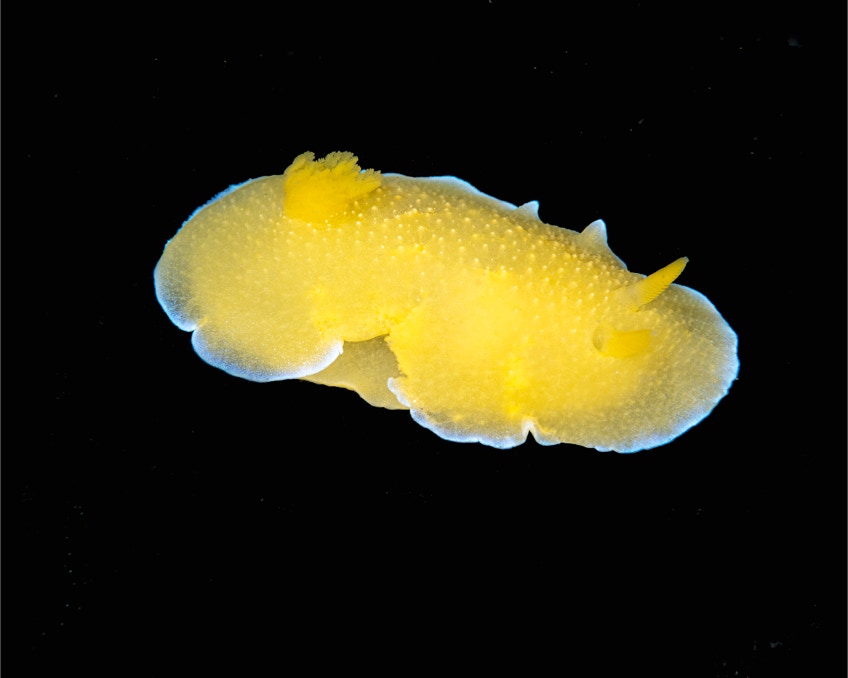
Here is a nice little Doriopsilla spaldingi from our most recent Giant Stride diving. He is sitting on the telescope black felt stage. These are interesting nudibranchs who don't have a radula. They feed on sponges and use enzymes to externally dissolve the sponge and then eat everything but the sponge skeleton.

Here is a nice little Polycera hedgpethi sitting on the black telescope felt stage. This guy is now known all over the world, probably as a hitchhiker since his preferred food Bugula is a well known growth that is found on many ships.

Here is a nice little Anthopleura elegantissima from our dive on the Giant Stride on Saturday. These anemones are very interesting. The green color is from a symbiotic zooxanthellae that is often his major source for food. Since the algae needs lots of light (these guys are very pale if they live under a dock where there is no light) they are at risk for sunburn. So the algae actually can synthesize a type of sunscreen called a mycosporine like amino acid that also protects the anemone.

Here is a nice little Spanish shawl (yet again) from our dive last weekend on the Giant Stride. He is sitting on the black felt stage. This one needed a bunch of cleanup since it was a bit surgey at Garden Spot.

We went diving Friday on our favorite boat, the Giant Stride with some good friends. I found this nice little Flabellinopsis Spanish Shawl. Here he is on the black telescope felt stage. As we have discussed before, all of the colors , the orange, red, blue and purple are from different isomers of the same pigment, astaxanthin (for the Chemists in the group). I have often wondered though about the white on the rhinophores. It turns out that it is not a white pigment but rather a reflection from a stack of guanine (an RNA base pair) crystals. This is also the source of the shimmering white in the Hermissenda. The crystals are stored in schemochromes (a new word for me) and can move around quite a bit.

Don't know if the most correct name is Orienthella or Flabellina. In any case here is a nice little trilineata sitting on the microscope felt stage.

On a recent local dive trip to the reefs of Palos Verdes with friends on the Giant Stride, I decided to go back to the dichroic glass stage. Here is a nice little Hermissenda opalescens sitting on the stage. In spite of the fact that he is a slug and can only crawl he continuously was able to turn away from me and my lights. So here he is crawling away.

Here is a nice little (and I mean little) larva of Luidia sarsi (according to Richard Kirby) that we saw a couple of weeks ago on blue water drift with friends on the Giant Stride. When we first saw these guys, we thought that a jelly had eaten the sea star but no this is the beast. According to Kirby, when it is time, the yellow star leaves the jelly and sinks to the bottom and the jelly guy can keep swimming around for a while.

We went diving 2 weeks ago and did some blue/green/black water dives. Here is a nice little jelly we saw at the very beginning of the dive.

Same guy (or his brother) as before but shooting parallel to the surface so you can see the water is green.

Here is a nice not so little Jelly from a very recent blue water dive in deep water off of Palos Verdes. This guy was probably 4 inches (100 mm) across and had a bunch of stuff in his tentacles, not clear what they were but appeared to be shrimpy kinds of things.

Here is another view of the previous Jelly. I don't know what the pink guys inside the jelly are, but there were lots of them.











